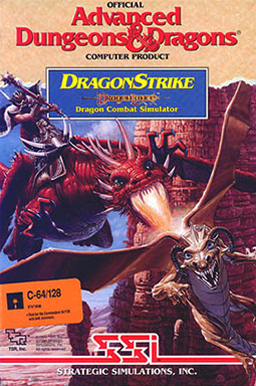
DragonStrike is a 1990 flight simulator based on the Dungeons & Dragons fantasy tabletop role-playing game. It is set in the Dragonlance campaign setting.

Red Baron is a combat flight simulation video game for MS-DOS created by Damon Slye at Dynamix. It was published by Sierra On-Line in 1990. The game was ported for Amiga and Macintosh computers in 1992.

Gunship is a combat flight simulation video game developed and published by MicroProse in 1986. In the game, controlling a simulated AH-64 Apache helicopter, players navigate through missions to attack enemy targets and protect friendly forces. Commercially and critically successful, Gunship was followed by Gunship 2000 and Gunship!.

Marine Attack Squadron 223 (VMA-223) is a United States Marine Corps fixed wing attack squadron that consists of McDonnell-Douglas AV-8B Harrier II (V/STOL) jets. The squadron is based at Marine Corps Air Station Cherry Point, North Carolina and falls under the command of Marine Aircraft Group 14 (MAG-14) and the 2nd Marine Aircraft Wing. The squadron uses "Stone" as its radio callsign.
Combat flight simulators are vehicle simulation games, amateur flight simulation computer programs used to simulate military aircraft and their operations. These are distinct from dedicated flight simulators used for professional pilot and military flight training which consist of realistic physical recreations of the actual aircraft cockpit, often with a full-motion platform.
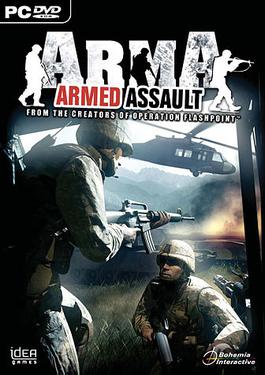
Arma: Armed Assault is a 2006 tactical shooter simulation video game developed by Bohemia Interactive and published by 505 Games in Europe and Atari in North America for Microsoft Windows. It is the first installment in the Arma series and is a spiritual successor to the 2001 video game Operation Flashpoint: Cold War Crisis, which was also developed by Bohemia. Set on the fictional Atlantic island of Sahrani, the game follows United States Armed Forces military advisors as they are caught in the midst of a conflict between the two rivalling nations on the island.
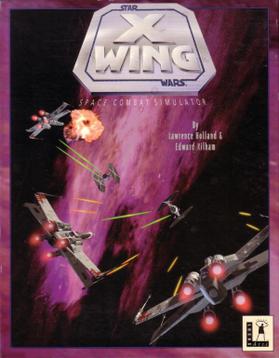
Star Wars: X-Wing is a space simulation video game, the first of the X-Wing combat flight simulation games series. The player's character flies starfighters, including the X-wing, for the Rebel Alliance. The narrative precedes and parallels the events of Star Wars Episode IV: A New Hope.
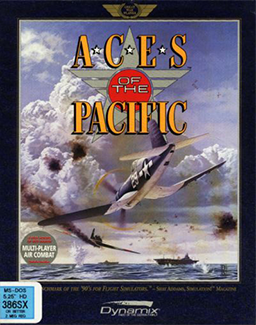
Aces of the Pacific is a combat flight simulation game developed by Dynamix for MS-DOS compatible operating systems and published by Sierra On-Line in 1992. The game takes place during World War II. Players can choose to play a single mission or a career path in United States Army Air Forces, United States Navy, United States Marines, Imperial Japanese Army, or Imperial Japanese Navy. Dynamix followed-up the game with Aces Over Europe in 1993.

MechWarrior 2: 31st Century Combat is a vehicle simulation game developed and published by Activision, released in 1995 as part of the MechWarrior series of video games in the BattleTech franchise. The game is set in 3057, and is played as a tactical simulation that incorporates aspects of real-time first-person combat and the physical simulation of the player's mech. It is a game recreation of the "Refusal War." The player can join one of the clans, Clan Jade Falcon or Clan Wolf while engaging in up to 32 missions.
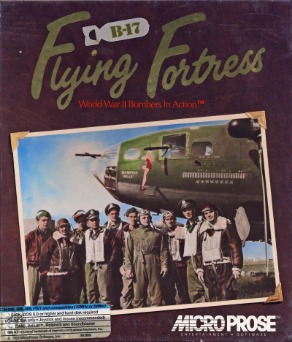
B-17 Flying Fortress: World War II Bombers in Action is a combat flight simulation video game developed by Vektor Grafix and published by MicroProse for the PC MS-DOS in 1992 and for the Amiga and Atari ST in 1993. The game simulates training, combat missions and sorties in a tour of duty in the Eighth Air Force of the United States Army Air Forces in the European Theater of Operations aboard a Boeing B-17 Flying Fortress heavy bomber during World War II. It was followed by B-17 Flying Fortress: The Mighty 8th in 2000.

Combat Flight Simulator 3: Battle for Europe (CFS3), is the latest installment of combat flight simulators from Microsoft Game Studios, released on October 24, 2002 in North America and on November 15, 2002 in Europe for the Microsoft Windows.
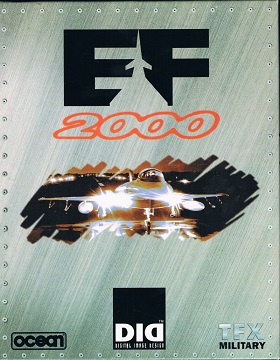
EF2000 is a combat flight simulator video game developed by Digital Image Design (DID) and published by Ocean Software in 1995 for the PC DOS. It is the sequel to DID's earlier software title, TFX. An expansion pack, EF 2000: TACTCOM, was released in 1996. A compilation, EF 2000: Evolution, that included the main game and the expansion was released in 1996. An updated version, Super EF2000, was released exclusively for Windows 95 in 1996 in Europe. In 1997, a compilation titled EF2000 V2.0 was released in North America that included the original DOS versions of EF2000 and TACTCOM and also the Windows exclusive Super EF2000. In June 1997, the graphics were boosted when DID released the "Graphics+" patch, which added Rendition Vérité hardware support and Glide API for 3dfx graphics card support to EF2000.

Star Wars: TIE Fighter is a 1994 Star Wars space flight simulator and space combat video game, a sequel in the Star Wars: X-Wing series. It places the player in the role of an Imperial starfighter pilot during events that occur between The Empire Strikes Back and Return of the Jedi.
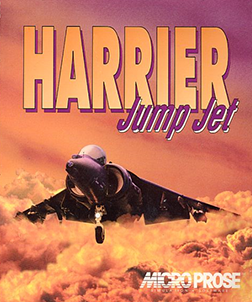
Harrier Jump Jet, aka Jump Jet is a flight simulator published by MicroProse in 1992.
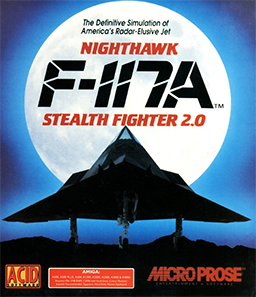
F-117A Nighthawk Stealth Fighter 2.0 is the 1991 remake of the 1988-1990 Cold War combat flight simulator video game F-19 Stealth Fighter by MicroProse, itself a remake of 1987's Project Stealth Fighter. The original PC version was updated with a corrected aircraft model once the Lockheed F-117 Nighthawk was declassified and with 256-color VGA graphics instead of the original's 16-color EGA, among other changes.

The McDonnell DouglasAV-8B Harrier II is a single-engine ground-attack aircraft that constitutes the second generation of the Harrier family, capable of vertical or short takeoff and landing (V/STOL). The aircraft is primarily employed on light attack or multi-role missions, ranging from close air support of ground troops to armed reconnaissance. The AV-8B is used by the United States Marine Corps (USMC), the Spanish Navy, and the Italian Navy. A variant of the AV-8B, the British Aerospace Harrier II, was developed for the British military, while another, the TAV-8B, is a dedicated two-seat trainer.
Star Wars: X-Wing is a series of space flight simulator video games based in the Star Wars media franchise that attempts to simulate the fictional experience of starfighter combat, while remaining faithful to the movies. The player took the role of a pilot of the Rebel Alliance, and, in later games, the Galactic Empire. To complete the games, players must complete missions such as simple dogfights with opposition starfighters, reconnaissance and inspection tasks, escort duty for freighters or capital ships, or attacks on larger opposition ships. In addition to dogfighting designed to resemble the free-wheeling duels of World War I, the games also offered the challenge of managing power resources and wingmen, and using weapons effectively.

MiG-29 Fulcrum is a combat flight simulator video game released by Domark in 1990 for the Acorn Archimedes, Amiga, Atari ST and MS-DOS PC platforms.

F-16 Combat Pilot is a 1989 F-16 fighter flight simulator created by British software company Digital Integration Ltd for Amiga, Atari ST, DOS, Commodore 64, Amstrad CPC, and ZX Spectrum. It is considered as one of the first combat flight simulators to have a dynamic campaign environment. While the graphics, scenery and audio are quite sparse and basic, the instruments and flight dynamics of a F-16C Fighting Falcon are fully featured and modeled.

Flying Nightmares is a flight simulator published by Domark for the Power Macintosh running classic Mac OS. It was a port of the almost identical IBM PC version, SVGA Harrier. It was one of the first commercial PPC native games. It was later ported to the 3DO by Lifelike Productions.





















